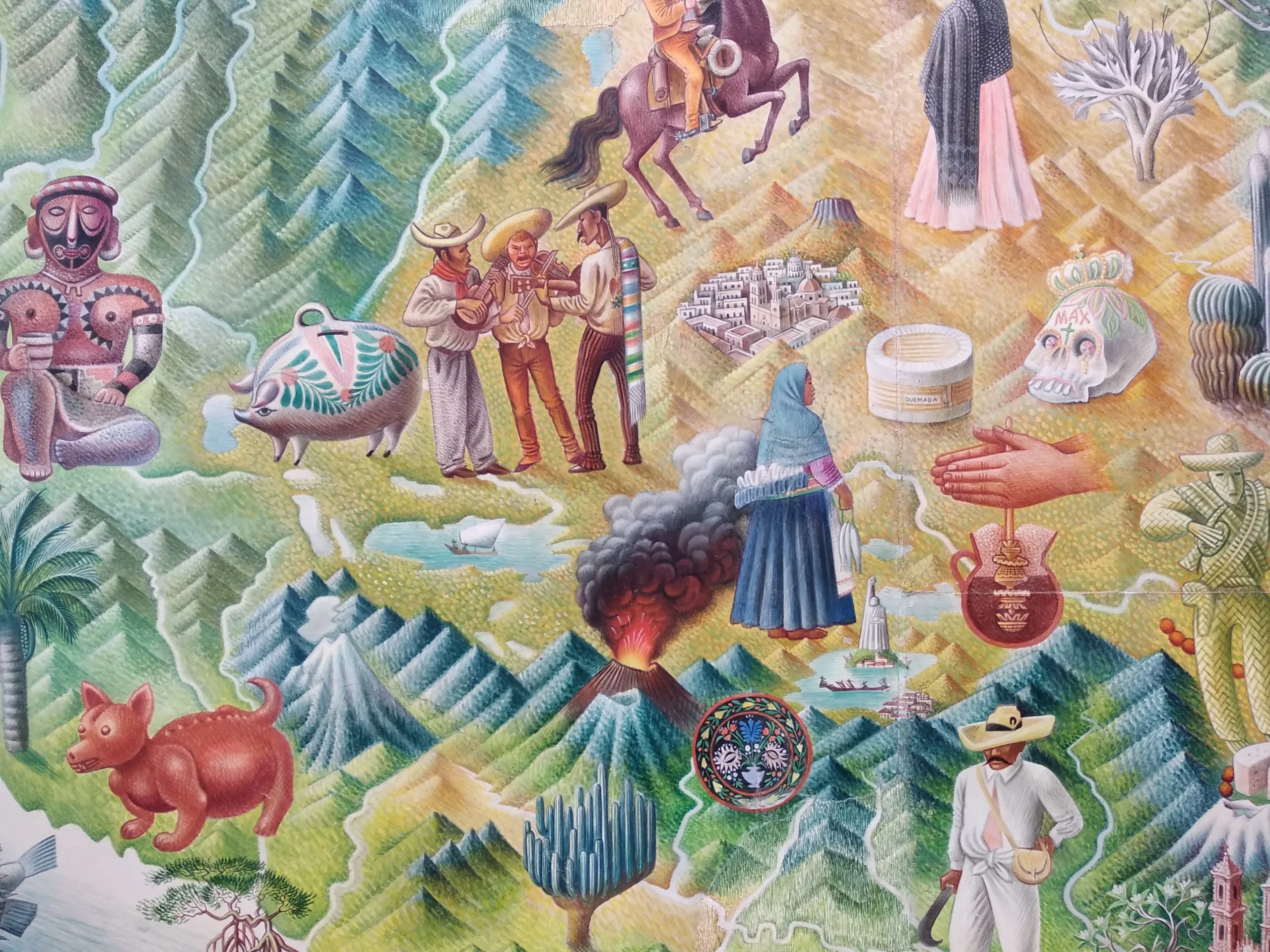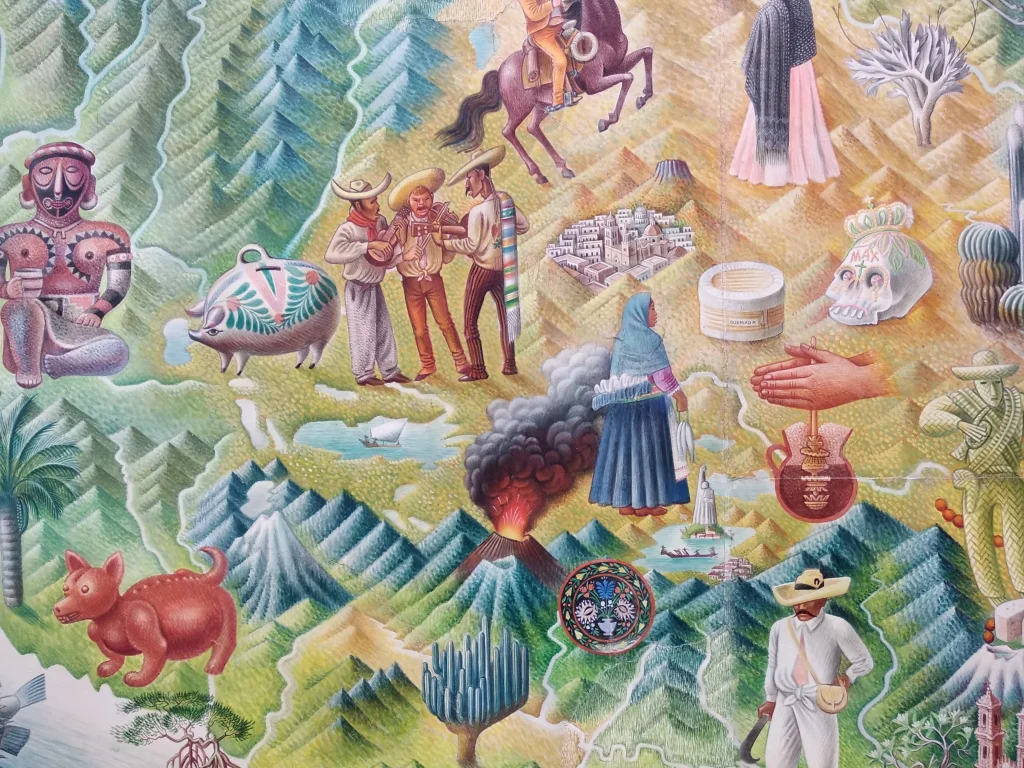For US and Canadians wanting to broaden their Mexico for travel and living horizons, there is no better adventure than getting to know Mexico’s central inland states. You’ll discover how Mexico’s historic interior embodies the true character of Mexico as a nation. In this way, it showcases the country’s three hundred years under European rule.
To fully appreciate the importance of the colonial period in Mexico’s development, a little history lesson is in order.
Following the conquest of the Aztec empire in 1521, Mexico became the richest and most prized colony in a Spanish empire. This empire would eventually span the globe. For 300 years, Spain ruled Mexico and converted the country into a New World replica of the mother country. To subjugate and control this vast land, Spain imported more than just an architectural flair. Iberian political, social, religious and commercial systems were introduced that strived to convert Mexico’s Indigenous people to a way of life dominated by European ideas. So, Spanish culture and institutions flowed from Europe to the New World and soon inundated and destroyed some 90% the Indigenous population.
Visitors experience towns built with architectural and artistic details identical to Spain. Catholicism was introduced, as was a colonial economic system designed to serve Spain and its creditors. This incursion had a monumental impact on Mexico’s development as a nation.
Today Mexico has more Spanish colonial-era architecture, monuments, museums, and fine art than any country in the world. (The Catholic Church built 12,000 churches and cathedrals during this 300-year period.). This heritage is easily explored in hundreds of cities, towns, and villages. Some have remained little changed since the early 19th century.
In the past, the term “Colonial Circle” was used to describe a collection of towns and villages between Guadalajara and Mexico City. There are many clusters of colonial cites in different states around Mexico. One group of cities, called Mexico’s “Colonial Treasures,” are in seven Central Mexico states: Aguascalientes, Durango, Guanajuato, Michoacán, Querétaro, San Luis Potosí, and Zacatecas.
Central Mexico
Set in Mexico’s central highlands between 6,000- and 8,000-feet elevation, this region abounds with Old World charm, romance and gracious hospitality. As a result, the region’s prosperity and historic importance over the last 400 years are on display in magnificent architecture, artistic treasures, fine museums, and proud monuments.
Central Mexico’s colonial attractions can be divided into three geographic zones: upper, middle and lower. To the north, in the upper zone, are the states/cities of Zacatecas, San Luis Potosí and Aguascalientes. The middle zone (often referred to as the “colonial circle”) is a series of well-known cities often combined into one itinerary. They include states of Guanajuato and Queretaro. Further south and closer Mexico City, in the lower zone (Queretaro and Michoacan), is a collection of colonial cities that can be seen as day trips from the capital or with more extended itineraries.
Despite settings that vary from high, wind-swept plateaus to verdant, jungle-clad mountains, and from villages to major urban and commercial centers, Central Mexico’s colonial cities all share a similar past. So, this region of Mexico played a crucial role in world history. Spain’s colonial empire thrived for 300 years thanks to the extraction of massive wealth from the New World, and a significant portion of that wealth came from Central Mexico. In fact, for some two and a half centuries, nearly one-third of the world’s silver came from the mines of one city – Guanajuato.
Adding to its importance, this fertile region was also Mexico’s “breadbasket”. So, its farms, orchards and ranches fed Spain’s emerging New World cities. The wealth extracted from this region not only fueled the development of Mexico City and Guadalajara, but also allowed Spain to wage an unending series of religious wars and crusades in Europe and the Middle East. So, the result was the economic and social emergence of Europe in the 17th and 18th centuries, thus ending the Dark Ages.
In the early 1800s, Central Mexico was the birthplace of Mexico’s independence movement from Spain. From this conflict arose Mexico’s greatest national heroes and patriots, most of whom were natives of this region. The area also played a critical role during the Mexican Revolution of 1910 and was the scene of some of the fiercest fighting of Mexico’s bloody and tumultuous Civil War.
While fully attuned to the needs of foreign visitors and residents, Colonial Mexico is best suited to a more experienced Mexico traveler. A working knowledge of Mexican history is also helpful. The area’s climate is most agreeable, with spring-like conditions year-round (winter evenings are cool, and often cold, due to elevation). If you’re exploring Mexico for living, these seven states can become viable choices, depending on your situation. Choosing Mexico can help you find your village in the sun.




